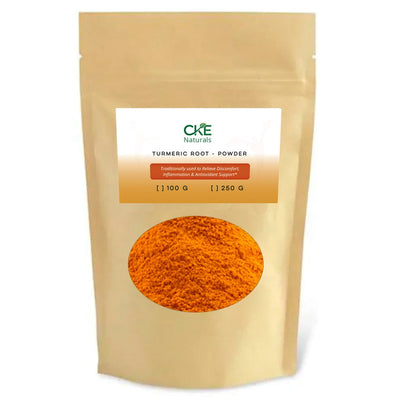Crafting Herbal Teas for Health: Tips and Benefits for a Wellness Boost

Herbal teas have been cherished for centuries for their soothing flavors and health-boosting properties. Crafting your own herbal teas allows you to tailor blends to your specific health needs, ensuring that each cup provides the maximum benefit. Whether you're looking to boost your immune system, relax after a long day, or improve digestion, there's an herbal tea blend for you. This article explores the benefits of herbal teas, provides tips for crafting your own blends, and highlights some popular ingredients to get you started.
The Health Benefits of Herbal Teas
Herbal teas are made from a variety of plant materials, including leaves, flowers, seeds, and roots. These ingredients are packed with vitamins, minerals, antioxidants, and other beneficial compounds. Here are some of the top health benefits of drinking herbal teas:
1. Boosting Immunity Many herbal teas contain ingredients that can strengthen your immune system. For example, echinacea and elderberry are known for their immune-boosting properties, helping to fend off colds and infections.
2. Promoting Relaxation Herbal teas like chamomile and lavender are famous for their calming effects. They can help reduce stress, alleviate anxiety, and promote a restful night’s sleep.
3. Improving Digestion Herbs such as peppermint, ginger, and fennel can aid digestion, relieve bloating, and reduce nausea. These teas can be particularly soothing after a heavy meal.
4. Supporting Detoxification Ingredients like dandelion root and burdock root have detoxifying properties, helping to cleanse the liver and support the body’s natural detox processes.
Tips for Crafting Your Own Herbal Teas
Creating your own herbal tea blends is a fun and rewarding way to customize your wellness routine. Here are some tips to help you get started:
1. Choose High-Quality Ingredients Use fresh or dried herbs from reputable sources to ensure you're getting the full range of health benefits. Organic herbs are preferable as they are free from pesticides and other harmful chemicals.
2. Understand Flavor Profiles Different herbs have distinct flavors, and combining them can create a balanced and enjoyable tea. For example, minty herbs like peppermint can be combined with floral herbs like chamomile for a refreshing blend.
3. Experiment with Blends Don’t be afraid to mix different herbs to find combinations that you enjoy. Start with small batches to test the flavor and effects before making larger quantities.
4. Proper Storage Store your dried herbs in airtight containers away from light and moisture to preserve their potency and flavor. Label your containers with the names and dates to keep track of their freshness.
Popular Herbal Tea Ingredients and Their Benefits
To help you get started with crafting your own herbal teas, here are some popular ingredients and their health benefits:
1. Chamomile: Known for its calming effects and is often used to promote sleep and reduce anxiety. It has a mild, sweet flavor that blends well with other herbs.
2. Peppermint: Excellent for digestion and can help relieve symptoms of IBS, bloating, and nausea. It has a refreshing, cooling flavor that pairs well with many other herbs.
3. Ginger: A powerful anti-inflammatory and antioxidant. It aids digestion, reduces nausea, and can help fight colds and infections. Ginger adds a spicy kick to any tea blend.
4. Hibiscus: Rich in antioxidants and can help lower blood pressure and cholesterol levels. It has a tart, cranberry-like flavor that is delicious both hot and cold.
5. Echinacea: known for its immune-boosting properties. It can help prevent colds and shorten their duration. Echinacea has a slightly earthy flavor that can be enhanced with other herbs.
Crafting Herbal Tea Recipes
1. Calming Chamomile Blend
- 2 tsp dried chamomile flowers
- 1 tsp dried lavender
- 1 tsp dried lemon balm
- Steep in boiling water for 5-10 minutes. Enjoy before bedtime for a relaxing evening.
2. Digestive Aid Peppermint Ginger Tea
- 2 tsp dried peppermint leaves
- 1 tsp dried ginger root
- 1 tsp dried fennel seeds
- Steep in boiling water for 5-10 minutes. Drink after meals to aid digestion.
3. Immune-Boosting Echinacea Elderberry Tea
- 1 tsp dried echinacea root
- 1 tsp dried elderberries
- 1 tsp dried rose hips
- Steep in boiling water for 10-15 minutes. Drink daily during cold and flu season.
FAQs About Crafting Herbal Teas
Q: How long should I steep herbal teas?
A: Most herbal teas should be steeped for 5-10 minutes, but roots and seeds may require longer steeping times to fully release their beneficial compounds.
Q: Can I use fresh herbs instead of dried herbs?
A: Yes, you can use fresh herbs. Generally, you’ll need to use more fresh herbs (about double the amount) compared to dried herbs.
Q: Are there any herbs I should avoid?
A: While most herbs are safe, some can interact with medications or have contraindications. Always research or consult with a healthcare provider if you’re unsure.
Q: How should I store my herbal teas?
A: Store dried herbs in airtight containers away from light and moisture. Fresh herbs should be stored in the refrigerator and used within a few days.
Conclusion
Crafting your own herbal teas is a wonderful way to enhance your health and well-being. By understanding the benefits of different herbs and how to blend them, you can create delicious teas tailored to your specific needs. Start experimenting with your favorite ingredients and enjoy the soothing, therapeutic benefits of homemade herbal teas.
Ready to start crafting your own herbal teas? Visit our online shop at ckenaturals.com to explore our selection of high-quality herbs and supplements. Check out our latest promotions and take the first step towards a healthier lifestyle today!



